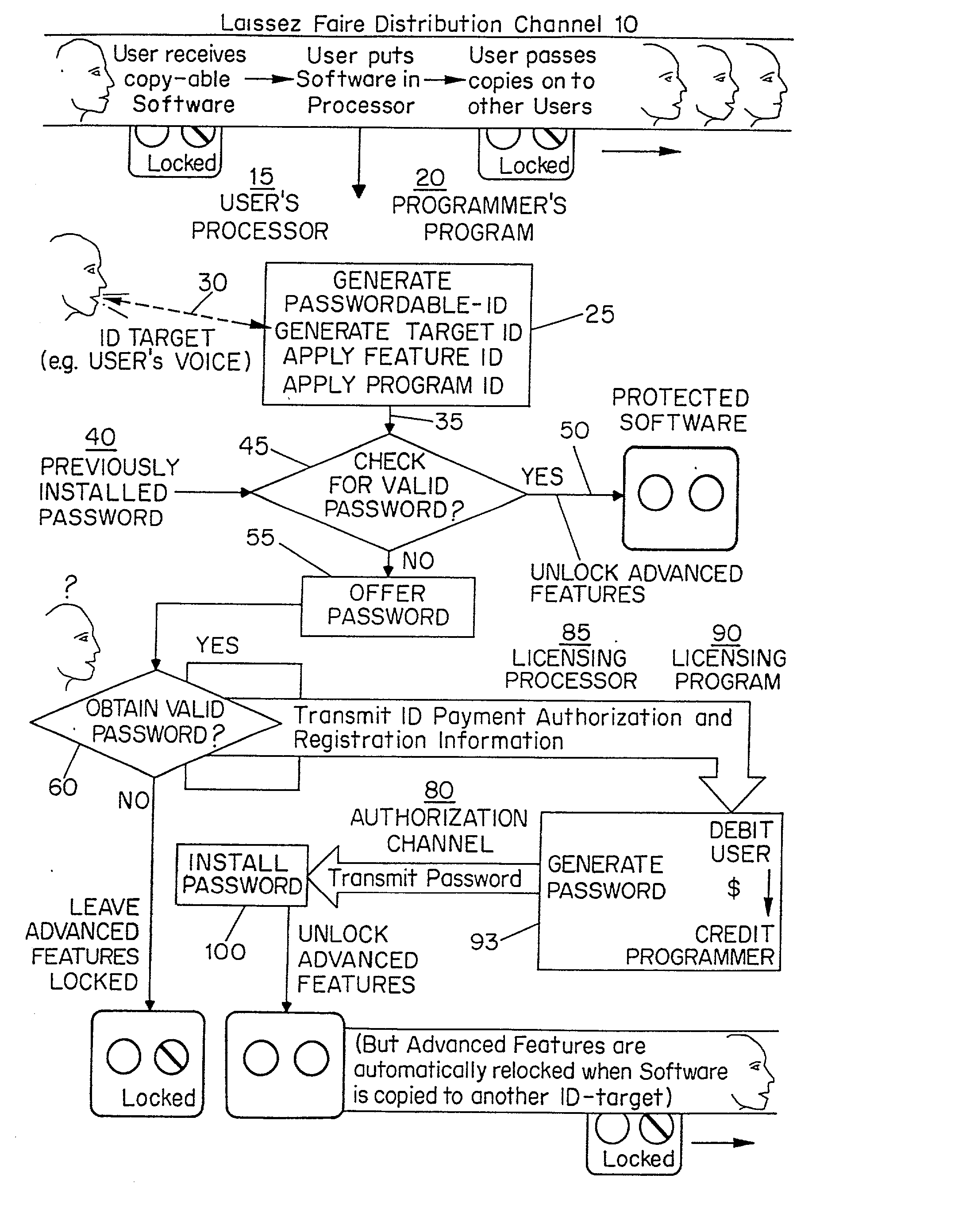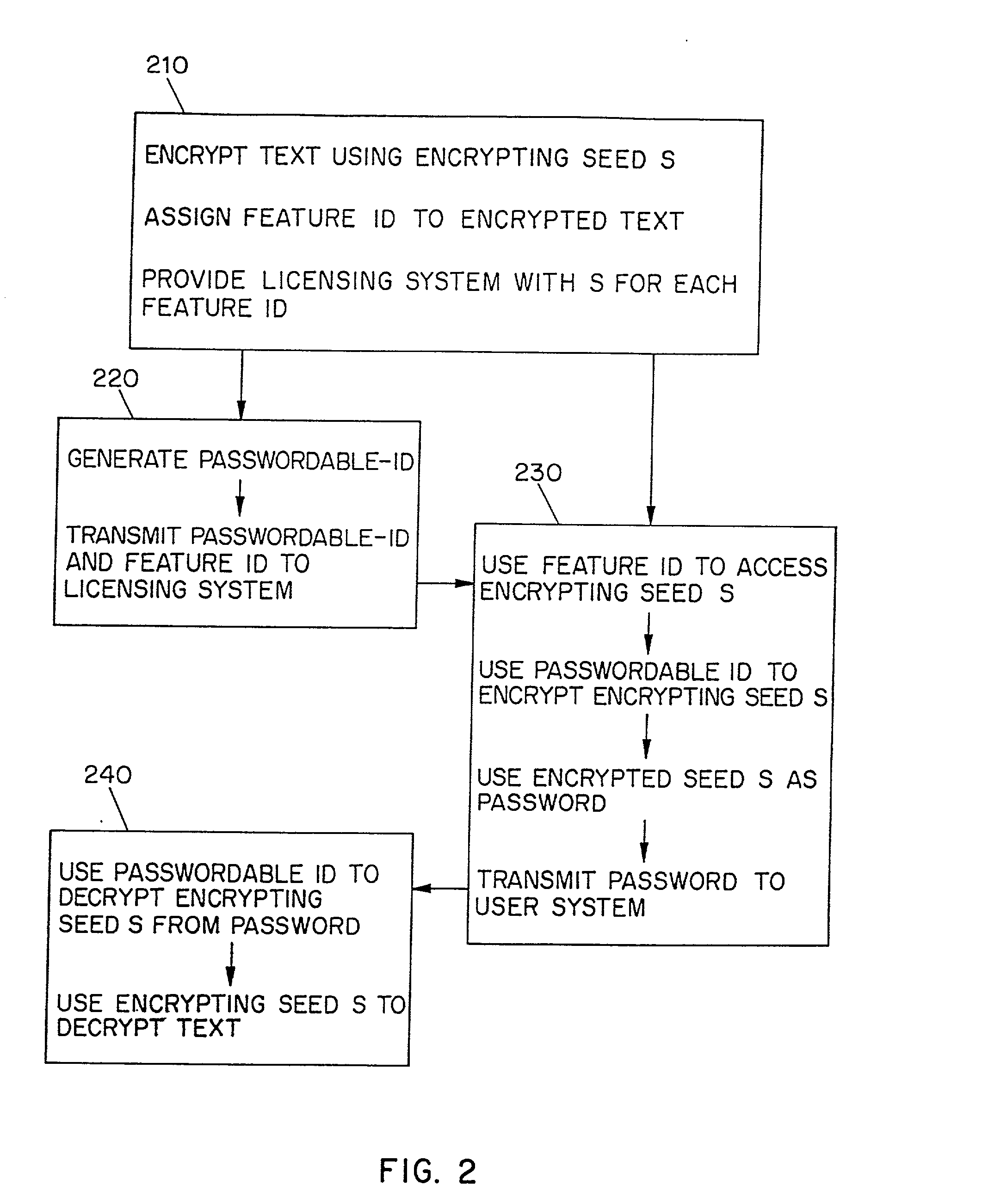Method for selling, protecting, and redistributing digital goods
a digital goods and protection technology, applied in the field of digital goods protection and redistributing, can solve the problems of software creators and copyright holders being subject to legal prosecution and intimidation for software piracy, unable to receive payment and registration information from users, and unable to regulate the use of their creations, etc., to achieve the effect of encouraging user registration and encouraging copying
- Summary
- Abstract
- Description
- Claims
- Application Information
AI Technical Summary
Benefits of technology
Problems solved by technology
Method used
Image
Examples
Embodiment Construction
[0040] The Laissez Faire Distribution Channel
[0041] The present invention differs from earlier inventions in separating the distribution channel by which software is acquired and distributed from the authorization channel by which licensing is transacted. One advantage of this innovation is that it allows Users and software distributors to support rather than impede the flow of information through the Laissez Faire Distribution channel which develops relatively spontaneously and at little cost to participants when freely-copyable software is present. Another advantage is that relatively little information needs to flow through the proprietary authorization channel. The present invention may well expand the Laissez Faire Distribution channel by making it economically viable for Software publishers to distribute software through the mail, as give-away items tucked into the volumes of third-party books, or as donations to public libraries, and so on. Note however, that while the Laisse...
PUM
 Login to View More
Login to View More Abstract
Description
Claims
Application Information
 Login to View More
Login to View More - R&D
- Intellectual Property
- Life Sciences
- Materials
- Tech Scout
- Unparalleled Data Quality
- Higher Quality Content
- 60% Fewer Hallucinations
Browse by: Latest US Patents, China's latest patents, Technical Efficacy Thesaurus, Application Domain, Technology Topic, Popular Technical Reports.
© 2025 PatSnap. All rights reserved.Legal|Privacy policy|Modern Slavery Act Transparency Statement|Sitemap|About US| Contact US: help@patsnap.com



